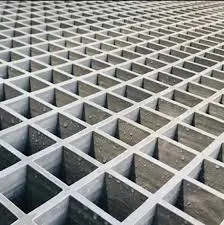
-
 Afrikaans
Afrikaans -
 Albanian
Albanian -
 Amharic
Amharic -
 Arabic
Arabic -
 Armenian
Armenian -
 Azerbaijani
Azerbaijani -
 Basque
Basque -
 Belarusian
Belarusian -
 Bengali
Bengali -
 Bosnian
Bosnian -
 Bulgarian
Bulgarian -
 Catalan
Catalan -
 Cebuano
Cebuano -
 China
China -
 China (Taiwan)
China (Taiwan) -
 Corsican
Corsican -
 Croatian
Croatian -
 Czech
Czech -
 Danish
Danish -
 Dutch
Dutch -
 English
English -
 Esperanto
Esperanto -
 Estonian
Estonian -
 Finnish
Finnish -
 French
French -
 Frisian
Frisian -
 Galician
Galician -
 Georgian
Georgian -
 German
German -
 Greek
Greek -
 Gujarati
Gujarati -
 Haitian Creole
Haitian Creole -
 hausa
hausa -
 hawaiian
hawaiian -
 Hebrew
Hebrew -
 Hindi
Hindi -
 Miao
Miao -
 Hungarian
Hungarian -
 Icelandic
Icelandic -
 igbo
igbo -
 Indonesian
Indonesian -
 irish
irish -
 Italian
Italian -
 Japanese
Japanese -
 Javanese
Javanese -
 Kannada
Kannada -
 kazakh
kazakh -
 Khmer
Khmer -
 Rwandese
Rwandese -
 Korean
Korean -
 Kurdish
Kurdish -
 Kyrgyz
Kyrgyz -
 Lao
Lao -
 Latin
Latin -
 Latvian
Latvian -
 Lithuanian
Lithuanian -
 Luxembourgish
Luxembourgish -
 Macedonian
Macedonian -
 Malgashi
Malgashi -
 Malay
Malay -
 Malayalam
Malayalam -
 Maltese
Maltese -
 Maori
Maori -
 Marathi
Marathi -
 Mongolian
Mongolian -
 Myanmar
Myanmar -
 Nepali
Nepali -
 Norwegian
Norwegian -
 Norwegian
Norwegian -
 Occitan
Occitan -
 Pashto
Pashto -
 Persian
Persian -
 Polish
Polish -
 Portuguese
Portuguese -
 Punjabi
Punjabi -
 Romanian
Romanian -
 Russian
Russian -
 Samoan
Samoan -
 Scottish Gaelic
Scottish Gaelic -
 Serbian
Serbian -
 Sesotho
Sesotho -
 Shona
Shona -
 Sindhi
Sindhi -
 Sinhala
Sinhala -
 Slovak
Slovak -
 Slovenian
Slovenian -
 Somali
Somali -
 Spanish
Spanish -
 Sundanese
Sundanese -
 Swahili
Swahili -
 Swedish
Swedish -
 Tagalog
Tagalog -
 Tajik
Tajik -
 Tamil
Tamil -
 Tatar
Tatar -
 Telugu
Telugu -
 Thai
Thai -
 Turkish
Turkish -
 Turkmen
Turkmen -
 Ukrainian
Ukrainian -
 Urdu
Urdu -
 Uighur
Uighur -
 Uzbek
Uzbek -
 Vietnamese
Vietnamese -
 Welsh
Welsh -
 Bantu
Bantu -
 Yiddish
Yiddish -
 Yoruba
Yoruba -
 Zulu
Zulu
Fiberglass Stack Liner Alternatives | Durable and Efficient Solutions
Exploring Alternatives to Fiberglass Stack Liners
The use of fiberglass stack liners in industrial applications has gained popularity due to their durability, corrosion resistance, and lightweight properties. However, there is growing interest in exploring alternative materials that can provide similar or enhanced performance while potentially offering cost savings or environmental benefits.
Exploring Alternatives to Fiberglass Stack Liners
Another promising option is the use of high-density polyethylene (HDPE) liners. HDPE is recognized for its excellent resistance to chemicals and UV degradation, making it suitable for various stack applications. Its flexibility and ease of installation can lead to reduced labor costs. Furthermore, HDPE is recyclable, providing an edge in terms of environmental impact. However, its performance in high-temperature environments may not match that of fiberglass or ceramics, which should be taken into account depending on the specific operational conditions.
fiberglass stack liner alternative

Metallic alternatives, such as stainless steel liners, offer yet another option. Stainless steel is known for its remarkable strength and durability, making it resistant to wear and tear over time. It also exhibits good resistance to corrosion, particularly in acidic environments. While stainless steel can be more expensive and heavier than fiberglass, its longevity may result in lower lifetime costs in harsh industrial settings.
Additionally, composite materials that blend various fibers and resins are being developed as stack liner alternatives. These composites can be engineered to optimize specific properties, such as thermal resistance and chemical stability, while potentially reducing overall weight and enhancing flexibility. Innovations in composite technology continue to expand the options available to industries looking for sustainable and efficient solutions.
Lastly, advancements in polymer technology have led to the development of epoxy and polyurethane liners. These materials provide excellent adhesion, flexibility, and resistance to chemicals. They can be tailored to suit specific conditions, allowing for a tailored approach to stack lining solutions.
In conclusion, while fiberglass stack liners have their advantages, a variety of alternatives are emerging that offer unique benefits. Industries are encouraged to evaluate their specific needs, including environmental impact, cost, and performance requirements, to make informed decisions about which material best suits their stack lining applications. As technology continues to evolve, the range of available alternatives will likely expand, paving the way for more sustainable and efficient industrial practices.
Latest news
-
Exploring the Benefits of Top Hammer Drifter Rods for Enhanced Drilling PerformanceNewsJun.10,2025
-
High-Precision Fiberglass Winding Machine for GRP/FRP Pipe Production – Reliable & Efficient SolutionsNewsJun.10,2025
-
FRP Pipes & Fittings for Shipbuilding - Corrosion-Resistant & LightweightNewsJun.09,2025
-
Premium FRP Flooring Solutions Durable & Slip-ResistantNewsJun.09,2025
-
Premium Fiberglass Rectangular Tanks Durable & Lightweight SolutionNewsJun.09,2025
-
Tapered Drill String Design Guide Durable Performance & UsesNewsJun.09,2025









